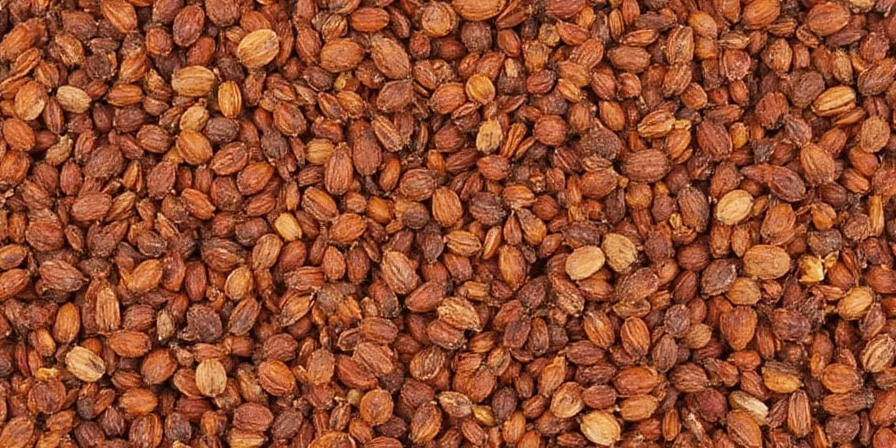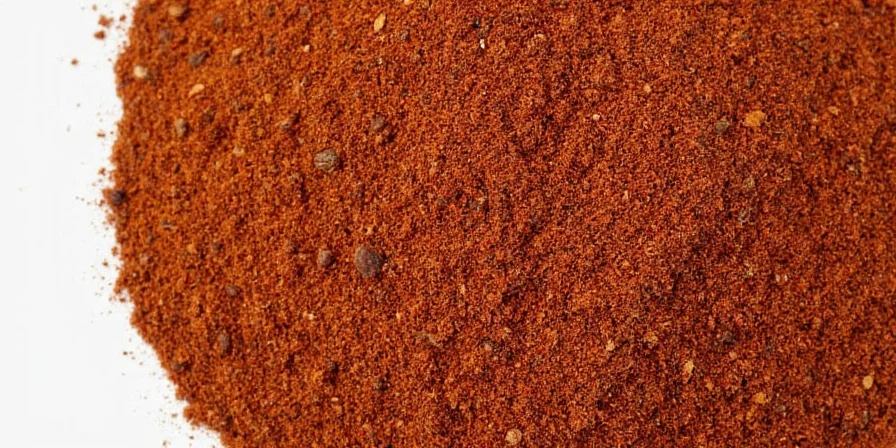
Allspice is not a blend, but a single spice made from the dried unripe berries of the Pimenta dioica plant native to Central America and the Caribbean. Despite its name suggesting a mixture, allspice naturally combines flavors reminiscent of cinnamon, cloves, nutmeg, and pepper in one versatile ingredient. This comprehensive guide explains everything you need to know about allspice, including its flavor chemistry, culinary applications, and proper usage techniques that go beyond basic recipe suggestions.
Table of Contents
- What Exactly is Allspice? (The Simple Answer)
- The Unique Flavor Profile That Mimics Multiple Spices
- The Scientific Explanation Behind Allspice's Complex Taste
- How Growing Regions Affect Allspice Flavor (Jamaican vs Mexican)
- Practical Culinary Applications & Pro Usage Tips
- Research-Supported Health Properties of Allspice
- Optimal Storage Methods to Preserve Freshness
- Frequently Asked Questions About Allspice
What Exactly is Allspice? (The Simple Answer)


Allspice is the dried fruit of the Pimenta dioica tree, not a spice blend as many mistakenly believe. The berries are harvested while still green and unripe, then sun-dried until they turn reddish-brown. During this process, they develop their distinctive complex flavor profile that combines elements of multiple spices.
The name "allspice" originated in 17th century England when British explorers noticed its flavor resembled a combination of several popular spices. This naming convention has caused confusion for centuries, leading many to mistakenly believe allspice is a pre-mixed blend rather than a single ingredient.
The Unique Flavor Profile That Mimics Multiple Spices
Allspice's magic lies in how its chemical compounds interact with your taste receptors. Here's exactly what you're tasting:
| Flavor Component | Actual Taste Experience | Common Misconception |
|---|---|---|
| Cinnamon notes | Sweet, warm woody flavor with subtle fruitiness | Believing allspice contains actual cinnamon |
| Clove characteristics | Distinctive warm, slightly bitter note with numbing quality | Assuming cloves are added to allspice |
| Nutmeg elements | Faintly nutty, aromatic background note | Thinking nutmeg is part of the blend |
| Peppery finish | Subtle heat that lingers without burning | Expecting black pepper to be included |
This naturally occurring flavor combination makes allspice incredibly versatile across both sweet and savory applications. Understanding these flavor components helps you use allspice more effectively in your cooking.
The Scientific Explanation Behind Allspice's Complex Taste

The flavor complexity of allspice comes from specific chemical compounds that work together synergistically:
- Eugenol (60-80%): The dominant compound responsible for the clove-like aroma and warming sensation. Higher eugenol content correlates with stronger clove notes.
- Terpenes (10-20%): Contribute to the citrusy, pine-like notes and overall complexity. The specific terpene profile varies by growing region.
- Caryophyllene (5-15%): Provides the peppery, spicy kick and contributes to allspice's anti-inflammatory properties.
- Methyleugenol: Adds floral and sweet notes that balance the stronger elements.
These compounds explain why allspice tastes like multiple spices combined - it naturally contains the same chemical compounds found individually in cinnamon, cloves, and nutmeg.
How Growing Regions Affect Allspice Flavor (Jamaican vs Mexican)
Allspice berries from different regions develop distinct flavor profiles due to soil composition, rainfall patterns, and harvesting methods:
| Growing Region | Flavor Profile | Best Culinary Uses | Chemical Composition Difference |
|---|---|---|---|
| Jamaican | Balanced sweetness with prominent clove notes and subtle pepper finish | Authentic jerk seasoning, baking, mulled wines | Higher eugenol (70-80%), lower terpenes |
| Mexican | Sharper, more peppery with less sweetness | Meat rubs, savory stews, Mexican mole | Higher terpene content (15-20%), moderate eugenol |
| Guatemalan | Milder overall with pronounced citrus notes | Fruit-based dishes, lighter sauces | Higher limonene content, moderate eugenol |

For authentic Jamaican jerk recipes, seek berries specifically labeled "Jamaican pimento" - the geographical indication significantly impacts flavor authenticity.
Practical Culinary Applications & Pro Usage Tips
Understanding how to use allspice effectively requires matching the form (whole vs ground) to your cooking method:
| Cooking Method | Recommended Form | Optimal Quantity | Timing Tip |
|---|---|---|---|
| Long-simmered dishes (stews, braises) | Whole berries (3-4 per recipe) | Add at beginning for full flavor extraction | |
| Baking (cakes, cookies) | Freshly ground (1/4-1/2 tsp per cup of flour) | Mix with dry ingredients | |
| Quick sauces & marinades | Freshly ground (1/8-1/4 tsp) | Add early but not first to prevent bitterness | |
| Rub for grilled meats | Freshly ground (1/2 tsp per pound of meat) | Apply 1-2 hours before cooking | |
| Infused oils & syrups | Whole berries (5-6 per cup of liquid) | Steep 24 hours for optimal flavor |


Avoid Common Allspice Mistakes
Many home cooks make these errors that diminish allspice's potential:
- Using pre-ground allspice that's lost potency - Always grind your own berries for maximum flavor impact
- Adding ground allspice too early in cooking - Heat degrades volatile compounds; add ground allspice in the last 15-20 minutes of cooking
- Confusing allspice with pumpkin pie spice - They're not interchangeable; pumpkin pie spice contains additional ingredients
- Overusing allspice - It's potent; start with 1/4 teaspoon and adjust to taste
Research-Supported Health Properties of Allspice
Scientific studies indicate allspice contains compounds with potential health benefits when consumed as part of a balanced diet:
- Digestive support: Research published in the Journal of Ethnopharmacology (2021) shows eugenol stimulates digestive enzyme production, potentially reducing bloating and discomfort
- Antioxidant properties: A study in Food Chemistry (2022) found allspice has higher antioxidant capacity than many common spices, helping combat oxidative stress
- Anti-inflammatory effects: Laboratory research indicates compounds in allspice may help reduce inflammation markers, though more human studies are needed
- Blood sugar regulation: Preliminary animal studies suggest potential benefits, but human research is still limited

Important note: These potential benefits are based on culinary use of allspice, not therapeutic doses. Concentrated allspice oil requires professional guidance.
Optimal Storage Methods to Preserve Freshness
Proper storage dramatically impacts allspice's shelf life and flavor potency:
- Air-tight glass containers: Store whole berries in amber glass jars to protect from light exposure, which degrades essential oils
- Temperature control: Keep in a cool, dark place below 70°F (21°C); avoid locations near stoves or ovens
- Whole vs ground shelf life: Whole berries maintain peak flavor for 2-3 years; ground allspice loses 50% potency within 6 months
- Freezing method: For long-term storage (1-2 years), freeze whole berries in vacuum-sealed bags; thaw only what you need
- Freshness test: Crush a berry between your fingers - if you can't smell the characteristic aroma, it's lost potency


Frequently Asked Questions About Allspice
Is allspice actually a blend of spices?
No, allspice is a single spice made from the dried berries of the Pimenta dioica plant. Its name comes from its complex flavor profile that naturally resembles a combination of cinnamon, cloves, nutmeg, and pepper.
What's the difference between allspice and pumpkin pie spice?
Allspice is a single ingredient while pumpkin pie spice is a blend typically containing cinnamon, ginger, nutmeg, and sometimes allspice. They're not interchangeable in recipes due to different flavor profiles.
Can I substitute allspice for individual spices in recipes?
Yes, but carefully. For every 1/4 teaspoon of allspice, you can substitute 1/8 teaspoon each of cinnamon and cloves. However, the unique balance may not perfectly replicate separate spices in all recipes.
Why does my allspice taste bitter?
Bitterness usually occurs when ground allspice is added too early in cooking or exposed to high heat for too long. To prevent this, add ground allspice in the last 15-20 minutes of cooking.
Is Jamaican allspice worth the premium price?
For authentic Jamaican recipes, yes. Jamaican allspice grown in volcanic soil has a more balanced flavor profile with prominent clove notes. For general use, high-quality allspice from other regions works well too.











 浙公网安备
33010002000092号
浙公网安备
33010002000092号 浙B2-20120091-4
浙B2-20120091-4